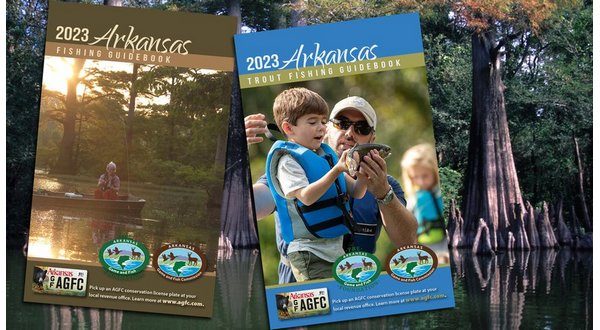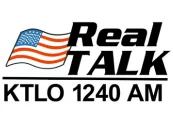
Image courtesy of the Arkansas Game and Fish Commission
LITTLE ROCK — Anglers looking for the latest version of the Arkansas Fishing Guidebook and Arkansas Trout Fishing Guidebook should begin seeing printed copies in local sporting goods stores in the next few weeks, but the Arkansas Game and Fish Commission (AGFC) says there’s a better way to keep all the details on hunting and fishing regulations in hand no matter where you go.
Digital copies of the guidebooks are available at www.agfc.com/en/resources/regulations/guidebooks to download to your computer or smartphone.
A new regulation that may catch the eye of many anglers is the reduction of the length limits on black bass on Norfork Lake. Largemouth and smallmouth bass 13 inches or longer may now be kept, and there is no longer a minimum length limit on spotted bass.
Sean Lusk, AGFC biologist in Little Rock, says, “Norfork and a few of the other lakes in North Arkansas have seen some high water years that produced some really good year classes of fish. There are a lot of bass in those lakes right now, which is great. But we want to be proactive and manage for that population increase in the event of lower water. There are a lot of mouths to feed right now, so encouraging a little harvest of those predators at smaller sizes can prevent them from hitting the forage base too hard and keep the lake healthy. We worked hard with anglers during creel surveys and focus groups about this change and they were very positive about it.”
New for this year, the AGFC has clarified the regulations regarding recreational harvest of crayfish in the state.
The regulation states a fishing license is required to harvest crayfish, and only 10 traps may be placed per license-holder at one time. Live, wild-caught crayfish may not be sold, exported or released in another water body; and crayfish trapping is prohibited in the Eleven Point, Strawberry and Spring rivers as well as the South Fork Spring River.
Lusk says, “We have a growing community of people who enjoy catching crayfish for get-togethers and as a food resource. We have a few endangered species of crayfish out there, so we needed to put some regulations in place so people could still have their crawfish boils while we look out for those species that need some protection from harvest.”
Another length limit that biologists worked with anglers extensively on is the introduction of a 10-inch minimum length for crappie caught at Lake Erling. Data collected from lead nets and creel surveys indicate that Erling is producing excellent numbers of crappie, but it has even more potential to produce larger fish with the minimum length limit in place.
A few other changes include:
The price of a nonresident annual fishing guide license increased to $450.
A fishing license is required to take aquatic turtles with recreational fishing tackle or by hand for personal use. The daily limit is 6 common snapping turtles and spiny softshell turtles combined. All other species of turtles must be released. Recreationally harvested turtles may not be sold.
The 13- to 16-inch slot limit on largemouth bass at Sugar Loaf Lake has been removed.
Lake Monticello has reopened for use; all game fish caught must be immediately returned to the water.
Lake Poinsett’s bream creel limit has been reinstated to the statewide limit of 50.
Bois d’Arc Lake’s crappie creel limit has been restored to the statewide limit of 30.
Lusk says not much has changed in trout fishing regulations, except the clarification of game fish parts being used as bait.
“We do allow commercially prepared salmon and trout eggs, which are technically game fish parts, as long as they retain the jar or packaging the eggs came from.”
A downloadable version of each guidebook is available at www.agfc.com/guidebooks.
WebReadyTM Powered by WireReady® NSI










